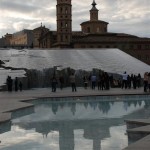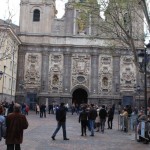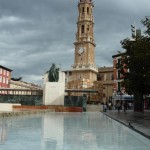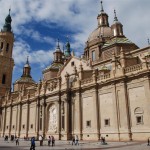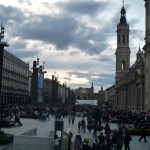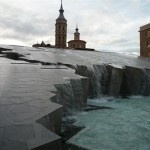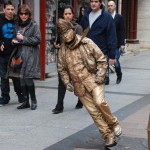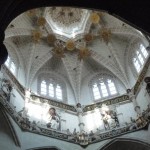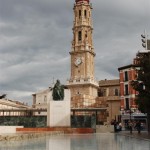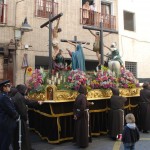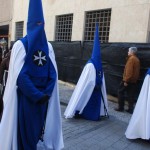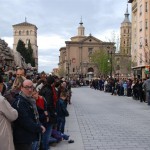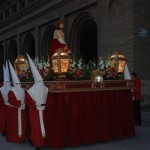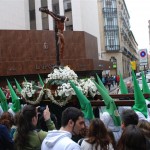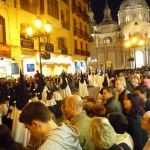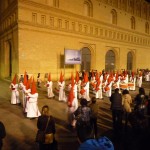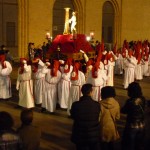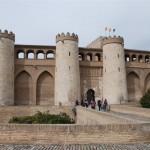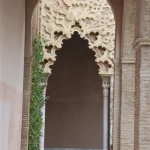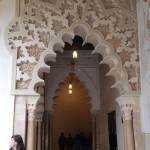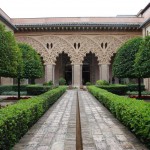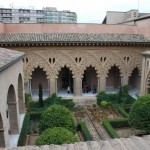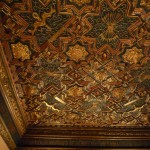Nick and I were invited to join a group of students of Spanish, going to see the Easter processions in Zaragoza. We left at 7.30 on Thursday morning and drove down to Spain, arriving at the hotel in the early afternoon. The weather was changeable, but did stay dry for that evening’s processions, which were spectacular. 15000 people take part in the processions; different groups dress in strange outfits, reminiscent of the Ku Klux Klan uniform, with tall hoods, a different colour for each group, that cover their faces. Each group has anything from a few hundred to a thousand members of all ages from children of about 5 years old to pensioners; they carry or push floats carrying statues representing the stages of the passion of Christ and beautifully decorated with flowers and candles The music is almost exclusively drums; several people carry large, round, base-type drums on straps around their shoulders, followed by dozens of others carrying smaller snare-type drums. They play the most complicated rhythms imaginable and even the smallest of the children were totally focused and well rehearsed; I only heard one mistake in the whole time we were there!
The processions started on Thursday afternoon and went on till about 2 the next morning; there was no point in going back to the hotel early as the sound of the drums reverberated around the entire city from groups processing and playing in different areas, on their different routes. When you stood close to them, you not only heard the sound, but felt it hit you in the chest, it was so loud!
The atmosphere was wonderful; the town was packed with visitors, but people were there to watch or to pray, or both. Sadly, the weather wasn’t brilliant and the Good Friday evening processions were cancelled because of the rain, which could have damaged the statues, but people queued to visit the church where they were housed.
On Friday morning our group visited the fort of Aljaferia, which was originally built by the Arabs, taken over by the French kings when this bit of Spain was part of France, then owned by the Moors. Each new owner added to the building, so it’s an amazing mixture of architectural styles.
We headed home on Saturday morning, calling in to see the disused railway station in Canfranc, once the largest in Europe and which must be one of the highest; then home to see Alex, Graham, Izzy and Martin, who’d arrived in our absence.
We had good news on our return; the photovoltaic man had called round; Kieran didn’t understand all he said, but thinks he’s going to start work soon, so no panic.
- In the plaza
- Church of St Isabella
- The basilica
- Not a statue; he was actually standing at that angle!
- In the cathedral
- Waiting for thr procession
- Aljaferia
- Aljaferia central courtyard
- One of the ceilings
- Canfranc station

